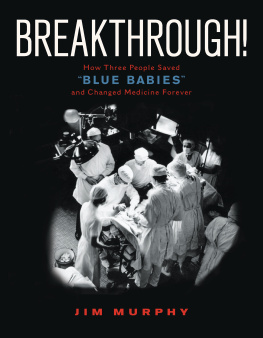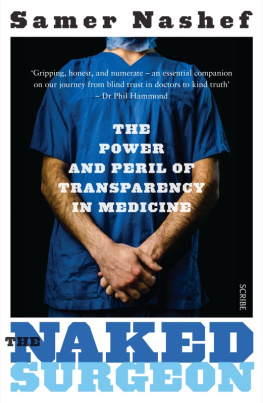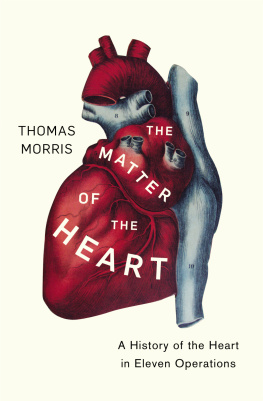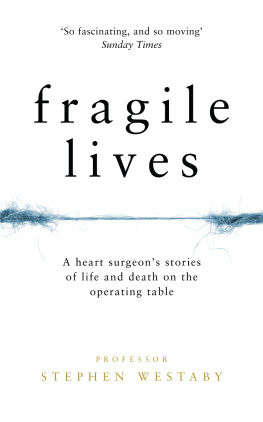Clarion Books
3 Park Avenue
New York, New York 10016
Copyright 2015 by Jim Murphy
All rights reserved. For information about permission to reproduce selections from this book, write to or to Permissions, Houghton Mifflin Harcourt Publishing Company, 3 Park Avenue, 19th Floor, New York, New York 10016.
Clarion Books is an imprint of Houghton Mifflin Harcourt Publishing Company.
www.hmhco.com
The Library of Congress has cataloged the print edition as follows:
Murphy, Jim, 1947
Breakthrough! : how three people saved blue babies and changed medicine forever / Jim Murphy.
pages cm
Audience: Age 912.
Summary: The story of the landmark 1944 surgical procedure that repaired the heart of a child with blue baby syndromelack of blood oxygen caused by a congenital defect. The team that developed the procedure included a cardiologist and a surgeon, but most of the actual work was done by Vivien Thomas, an African American lab assistant who was frequently mistaken for a janitorProvided by publisher.
ISBN 978-0-547-82183-2 (hardback)
1. Thomas, Vivien T., 1910-1985Juvenile literature. 2. Blalock, Alfred, 18991964Juvenile literature. 3. Taussig, Helen B. (Helen Brooke), 1898-1986Juvenile literature. 4. SurgeonsMarylandBiographyJuvenile literature. 5. Cardiovascular systemSurgeryJuvenile literature. 6. HeartSurgeryJuvenile literature. I. Title.
RD27.35.T46M87 2015
617'.0232dc23
2015013601
eISBN 978-0-547-82188-7
v1.1215
To my childhood physician, Dr. George F. Simms, who traveled to his first patients via horse and buggy and was still practicing medicine seven decades later,
and
To my present GP, Dr. Michael A. Parziale, who is highly knowledgeable and informative and does his work with easy grace and humor
There are men and women, but not a great number, created for the service of Medicine: who were called to be doctors when they were not yet called to be babies.
Dr. Stephen Paget, 1908
Preface
T HE cast-iron radiator in Johns Hopkins Hospital operating room 706 rattled and hissed but didnt give off much heat on the morning of November 29, 1944. Outside, a miserable, cold rain was falling, allowing only a feeble bit of gray light to seep through the rooms large windows.
The somber atmosphere was matched by the mood of the surgeon, Dr. Alfred Blalock, and the seven other people who made up his surgical team. And for good reason. The patient they were about to operate on, Eileen Saxon, was eighteen months old and weighed only 8.8 pounds. Eileen had a severe congenital heart defect that made it difficult for her to breathe and turned the skin on parts of her body an unhealthy-looking dark color. Dr. William Longmire, assisting Blalock that morning, was absolutely horrified by what he saw. I took one look at the little patient and thought, My God, this man isnt going to operate on her! I thought that after [the initial] incision... this child would surely die.
Others had worried that simply administering the anesthetic might kill Eileen. Dr. Austin Lamont, the chief of anesthesia at Johns Hopkins, felt the girls health was so fragile that he refused to assist Blalock.
No doctor who examined the girl would have disagreed with Lamonts assessment. Eileen was gravely ill and about to die. But Blalock and the head of the Childrens Cardiac Clinic, Dr. Helen Taussig, had argued that it was precisely because she was so close to death that the surgery was necessary. Eileens condition was rapidly deteriorating, they explained. She might live for a few hours, possibly even a day, but probably not much longer. The operation, if successful, was the only way to prolong her life.
The procedure was allowed to go forward, but the words if successful haunted Blalock. Responsibility for the operation and for Eileens life rested squarely on his shoulders. Self-doubt had been nagging at him since hed first scheduled the surgery a few days before. At one point, he grew so upset over some research experiments that hadnt gone well that he blurted out to Longmire, Bill, I am discouraged. Nothing I do seems to work these days. His lack of confidence had been following him everywhere and at all times. The night before the procedure Blalock had a difficult time sleeping; the next morning he was so distracted and nervous that he decided he couldnt drive safely and asked his wife to drive him to the hospital.
It wasnt only that the operation was very complex and risky. The surgery he was about to perform on Eileens struggling heart had never been done on a human before, let alone one so tiny or frail. This was why the balcony-type observation stand along the west side of room 706 was packed with curious Johns Hopkins staff and why a movie camera had been set up pointing at the operating table. If the operation workedif the patient survivedhistory would be made.
Moreover, Blalock had never performed this procedure, not even on an experimental animal. In fact, the only person to have done it successfully, start to finish, wasnt an official member of the surgical team. According to hospital rules, he wasnt even supposed to be in the room. But he was there now, at Blalocks request, standing just behind the surgeon on a wooden step stool. His name was Vivien Thomas, and most people at the hospital thought he was a janitor.
CHAPTER ONE
In the Dog House
V IVIEN Thomas took one look at the old Hunterian Laboratory on the Johns Hopkins campus and his heart sank. The building was squat and dour looking, an unruly growth of vines barely covering an undistinguished brick exterior. The interior was no better. The walls were painted a drab hospital-green, Thomas remembered, and [Dr. Blalock and I] were greeted by the odor from the [experimental] animal quarters in the basement. No wonder people referred to the building as the dog house.
Thomas had mixed emotions about following Blalock to Johns Hopkins University as his research assistant in 1941. The city of Baltimore was teeming with activity because the United States would very soon be at war with Germany and Japan. In addition to being a major seaport, Baltimore was a center of shipbuilding and steel production, both important industries during wartime. Baltimore was one of the busiest cities in the country, Thomas noted. Jobs were plentiful and people were coming from all over the country to fill them. The arrival of thousands of workers and their families had resulted in a severe housing shortage.
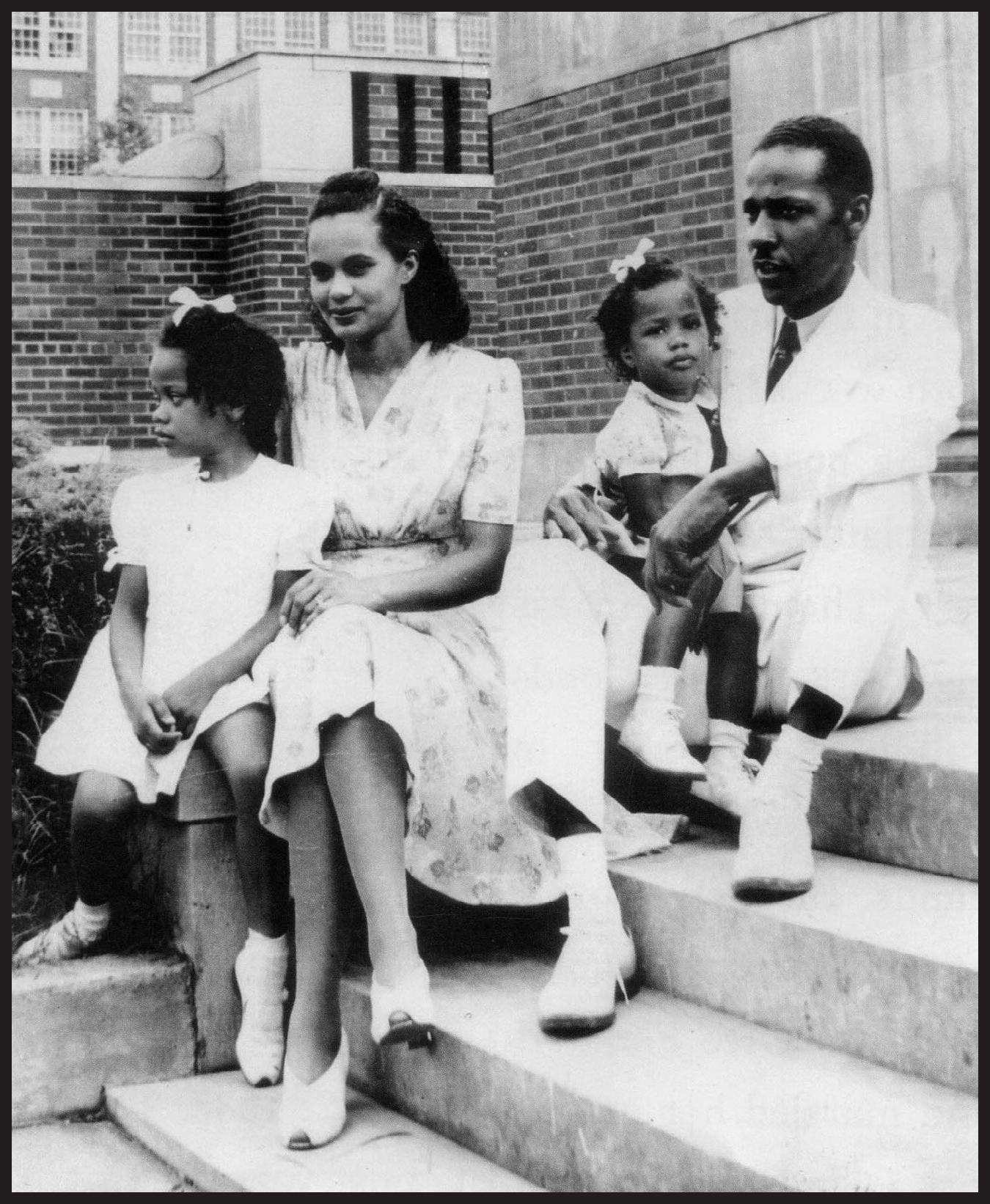
Vivien Thomas with his wife, Clara, and their daughters, 1941.
Thomas and his wife, Clara, had grown up in individual dwellings with lawns and trees that allowed for some outdoor livingwhat I called a little elbow room. The Thomases were unable to find such a place in Baltimore. Rental houses of this type were unavailable, not just because the recent influx of workers had made housing scarce, but because Thomas and his wife were African American. Real estate agents simply refused to show them houses in all-white suburbs.
Racial prejudice and segregation werent new experiences for Thomas and his wife. They had always lived in the South, first in a moderate-sized Louisiana town near the Gulf of Mexico, then in the larger city of Nashville, Tennessee. Both states had oppressive Jim Crow laws on the books, statutes that kept African American citizens separate from their white counterparts. Public bathrooms, restaurants, trolley cars, schools, hospitals, cemeteries, swimming pools, drinking fountains, prisons, and even churches existed for whites and blacks, but never for both together. Even with these unfair restrictions in place, Thomas had always been able to rent a real house with a yard. Until, that is, he got to Baltimore.

